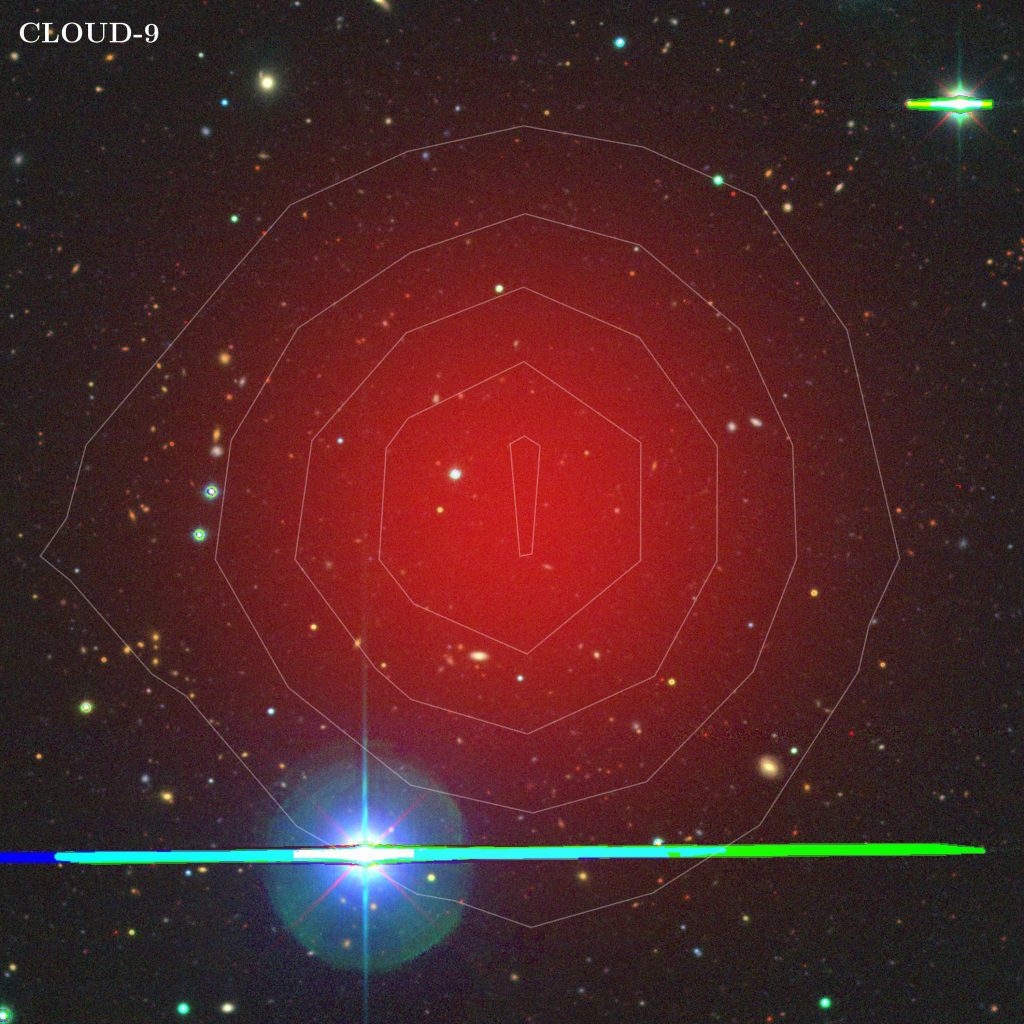A starless dark matter halo finally found?

Artistic representation of the underlying gas distribution traced by the observed emission at the location of Cloud-9.
Recent observations with the Five-hundred-meter Aperture Spherical Telescope (FAST) detected marginally-resolved extended gas emission near the M94 galaxy without an optical counterpart down to very faint limits (surface brightness ~29.15 mag/arcsec2 in the g band).
In a recent work published in the November issue of the Astrophysical Journal, Alejandro Benítez-Llambay, a researcher from the astrophysics unit at UNIMIB, shows that, unlike previous candidate “dark” HI clouds, all known properties of this source (named Cloud-9) are quantitatively consistent with RELHICs – collapsed dark matter halos that failed to form a galaxy in their centre.
The detected emission pattern projected on the sky is shown in the video below:
Theoretical predictions indicate that the most massive RELHICs should contain sufficient neutral hydrogen to emit characteristic light (21 cm emission), making them “visible” to radio facilities. Benítez-Llambay’s work shows that the emission pattern of Cloud-9 aligns very well with those expected for RELHICs, making this system the firmest RELHIC candidate ever detected. However, the author also discusses that the main doubts about Cloud-9’s nature concern the relatively poor angular resolution of the FAST beam (~3 arcmin), comparable to the extent of RELHICs at the M94 distance. Thus, the central properties of Cloud 9 should be investigated with new data, but current analysis hints at a very promising candidate for this long-predicted and elusive population.
Upcoming observations scheduled at the VLA interferometer will allow astrophysicists to place tighter constraints on Cloud-9’s nature and elucidate whether one of the fundamental predictions of the standard model of cosmology – the existence of collapsed starless dark matter halos – holds. If it does, it would be a prominent success for the leading cosmological model and an unparalleled constraint to galaxy formation models at the smallest scales!